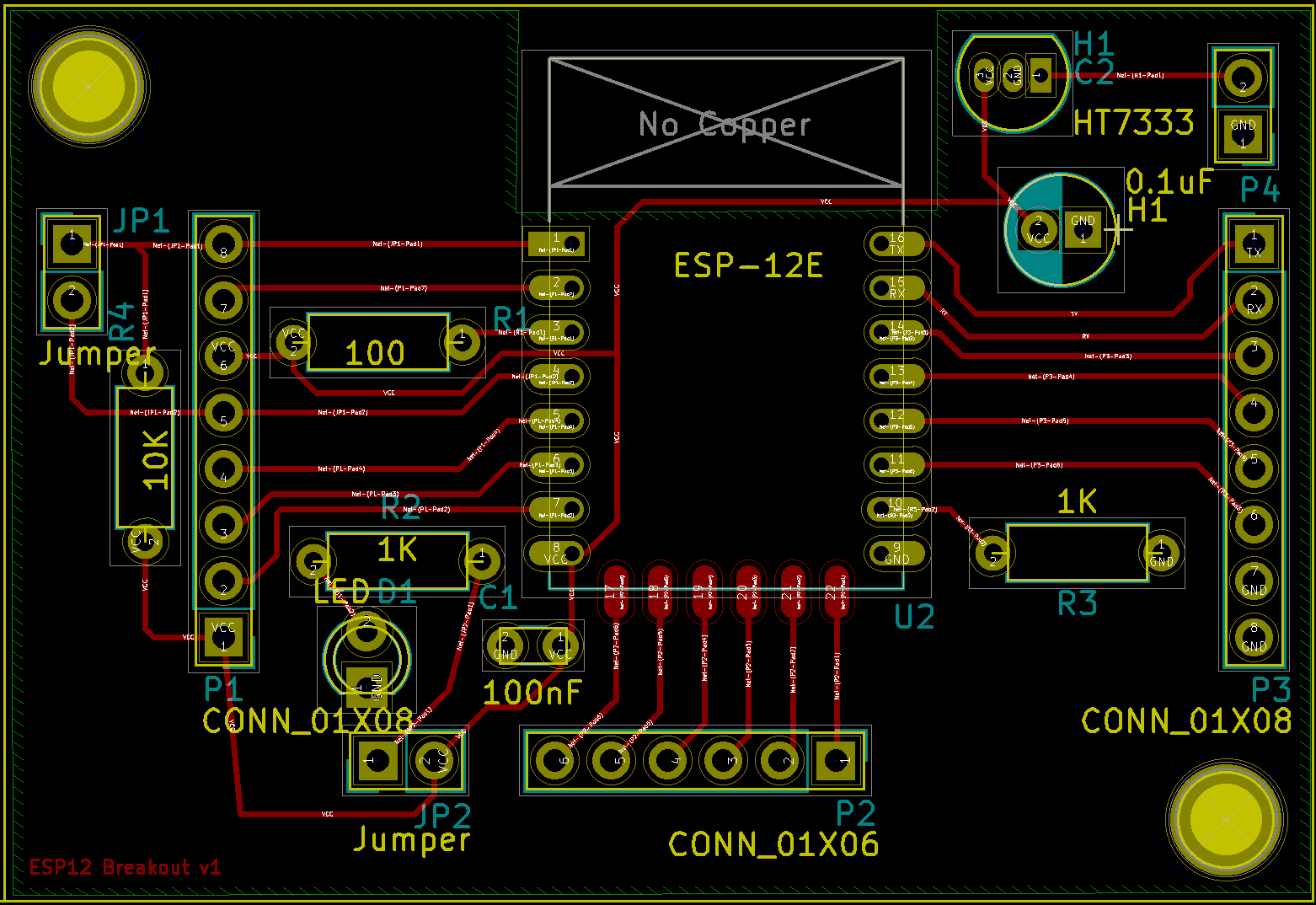My first PCB made with KiCad. I have some specific questions about my design. First I was not sure of this would have been another down-vote magnet but this article encouraged me to post this.
Capacitor placement; should C2 be connected to the ESP pins directly in stead of the front and back plane? It is supposed to be a decoupling capacitor.
Should I redraw sharp corners in a trace like on the back plane near pin 4.
What is the downside of using GND as back plane and VCC as front plane in stead of using traces only. It's a lot of surface, it does not feel right to just 'power' the entire front and back of the PCB.
Note: P4 is for input power to the board and the board will not be used for programming the ESP, just for continues use with deep sleep enabled.
Please add a comment when you down vote, I am here to learn.
All the data is on GitHub, in case you need it.
UPDATE
Added a better regulator, added a capacitor, added two mounting holes, removed the VCC field from the front, removed the crazy via's, moved some parts around and used the space below the components for traces.




